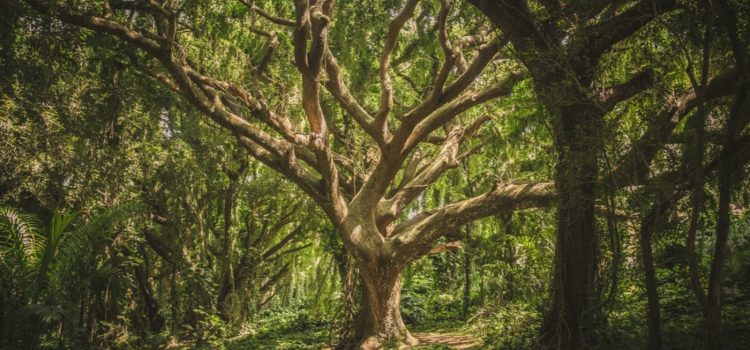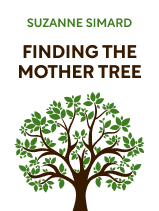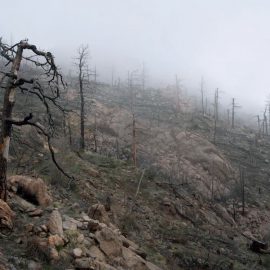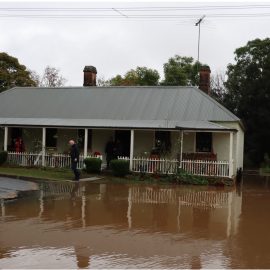

This article is an excerpt from the Shortform book guide to "Finding the Mother Tree" by Suzanne Simard. Shortform has the world's best summaries and analyses of books you should be reading.
Like this article? Sign up for a free trial here.
What is Suzanne Simard’s “Mother Tree” concept? What do Mother Trees do?
Ecologist Suzanne Simard explains in her book Finding the Mother Tree that trees in a forest are interconnected. Mother Trees connect to many of the other trees and take care of their communities.
Read below for an explanation of Suzanne Simard’s Mother Tree concept.
Simard’s Academic Research
Simard’s research throughout the 1990s on these cooperative relationships in forests would ultimately take her from the Forest Service to academia, where she became a researcher and professor at the University of British Columbia in 2002. Along with her graduate students, she began a systematic study of the complex underground fungal networks to understand the dynamic at work and how much of the resource sharing might be intentional.
Here, we’ll discuss Suzanne Simard’s Mother Tree findings, how this concept works to explain the relationships between trees, and the crucial importance of old-growth trees. Some of her key findings in this area are:
- Trees don’t just transfer nutrients back and forth in a linear relationship; they’re intertwined in a complex network, with older ones (Mother Trees) sustaining younger ones.
- Resource sharing is selective, with trees having the capability to “decide” when, with whom, and how much to share.
- Mother Trees give preference to their own offspring.
Mother Trees, According to Suzanne Simard
Simard came to discover that trees are intertwined via fungus in a complex resource-sharing network, with the older ones being “hubs” and the smaller ones “nodes.” She compares this to an internet satellite system, which she refers to as the “wood-wide web,” with the hub trees dubbed “Mother Trees.” Mother Trees are the oldest and largest trees in the forest and are linked to the greatest number of other trees.
Simard found that although Mother Trees send nutrients to their whole interconnected community, they recognize and favor their own offspring. In experiments where older trees were planted with seedlings that were their own offspring and others that were unrelated, she determined that the Mother Trees transferred more nutrients to their offspring. It was this realization that the trees were taking care of their “children” that inspired Simard’s coining of the phrase “Mother Trees.”
Another notable discovery Simard made is that when a Mother Tree is stressed and facing uncertainty (from disease, dehydration, or lack of nutrients) it will increase the number of nutrients it transfers to its kin. She says that when one of these old trees is dying, it will release all of its nutrients and energy at the end of its life to the next generation, just as humans pass on their resources to their children.
All of these findings, according to Simard, provide evidence that the transfer of nutrients isn’t simply a byproduct of the fungi attaching to multiple trees. The trees transfer nutrients selectively in different amounts, at different rates, and at different times, with more going to their kin than to strangers. So, Mother Trees favor their offspring and kin, she says, but they also take care of the whole community, because they “know” that it’s also essential to their offspring’s health. A healthy community and ecosystem is the best place to ensure one’s offspring will grow up healthy.
Public Response to the Mother Tree Concept
The concept of the Mother Tree has captured mainstream media attention and the public imagination. In response to this attention, in 2015 Simard created the website The Mother Tree Project, an online hub for research, news, and media coverage on the topic, including a periodic newsletter, and links to related resources.
The concept of Mother Trees has influenced popular culture as well. In his 2018 Pulitzer Prize-winning novel The Overstory, Richard Powers used Simard’s life and her findings about Mother Trees as the basis for a plotline. Even more well-known is James Cameron’s movie Avatar, which used the Mother Tree concept as the basis for the “Hometree,” an ancient and enormous tree that sustained the life and connected the souls of the entire alien Na’vi tribe.

———End of Preview———
Like what you just read? Read the rest of the world's best book summary and analysis of Suzanne Simard's "Finding the Mother Tree" at Shortform.
Here's what you'll find in our full Finding the Mother Tree summary:
- A look at Suzanne Simard's research on the relationships among trees
- What a Mother Tree is, and how it takes care of its community
- How trees communicate in an interconnected, underground network






